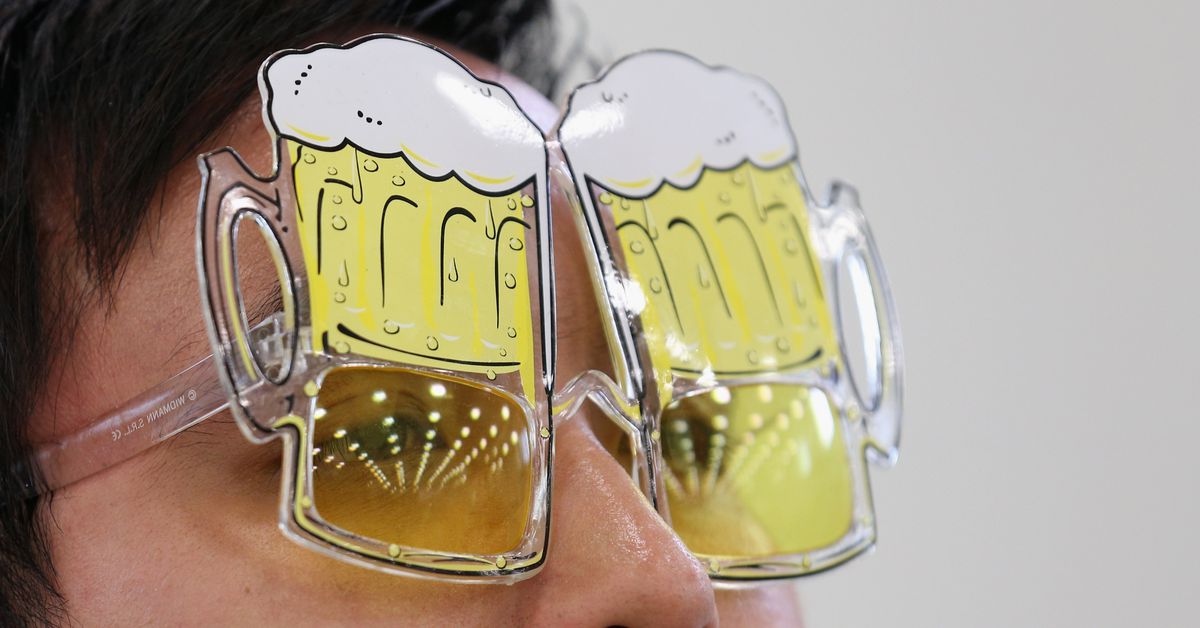It’s called “Calendargate,” and it’s raising the question of what — and whom — the right-wing war on “wokeness” is really for.
While most people were enjoying the holidays, extremely online conservatives were fighting about a pinup calendar.
Last month, Ultra Right Beer — a company founded as a conservative alternative to allegedly woke Bud Light — released a 2024 calendar titled “Conservative Dad’s Real Women of America 2024 Calendar.” The calendar contains photos of “the most beautiful conservative women in America” in various sexy poses. Some, like anti-trans swimmer Riley Gaines and writer Ashley St. Clair, are wearing revealing outfits; others, like former House candidate Kim Klacik, are fully clothed. No one is naked.
But this mild sexiness was just a bit too much for some prominent social conservatives, who started decrying the calendar in late December as (among other things) “demonic.” The basic complaint is that the calendar is pandering to married men’s sinful lust, debasing conservative women, and making conservatives seem like hypocrites when they complain about leftist immorality.



First off, I want to take a moment to recognize why I love Lemmy compared to places like Reddit or Facebook, where your alternate media equivalent would likely have told me to get fucked and made some choice comments about my mother. Instead, we’re having what is, at least speaking for myself, an intellectually stimulating conversation. It got me to really read a study outside of my discipline. Love it!
Respectfully, I think you may have misunderstood the paper. What you stated is true, but it’s not the only things the investigators sought to examine. Their intent to look at reaction formation secondary to parental effectsis mentioned right in the abstract. Regardless, with enough quality data, observations secondary to the primary intent of the paper can be made, upon the results of which I’m basing my assertion.
So the point I’m making, that there may be validity behind the assertion that straight identifying homophobes may have repressed homosexual desire, is addressed right in the first study. They used a MANOVA both with and without controls for gender and parent conservative beliefs, so of course there’s a vomit stream of results. Looking at table 1, there’s a statistically significant correlation (p < .01) between participant homophobia and low explicit orientation, i.e., identifying as straight. Shocking, I know but hey, at least their gay participants don’t hate themselves!
But check out the results in study 1, which sought to assess the effects of parental autonomy support, participants’ implicit and explicit sexual orientation, and self-reported homophobia on the discrepancy between automatic and explicit measures of sexual orientation. In the “participant’s self-reported homophobia” paragraph, simple main effects split by self-reported sexual orientation suggested (I’m a scientist, I’ll rarely say “proved”) that individuals who identified low in explicit sexual orientation, i.e., straight, but had higher implicit gay orientation, i.e., maybe more a friend of Dorothy than they profess, related to higher homophobia, β= .56, t(32)= 3.79, p>.001. In the words of one of my old students, that’s totes significant. n=89, which is a little low but not awful.
Same in study two, which looked at parents attitudes of homosexuality on participant sexual orientation and homophobia. Back in the results, with more MANOVA chowder, again under “participant’s self-reported homophobia”, simple main effects suggested that higher implicit orientation, i.e., more potential repressed “flame on”, related to increased self-reported homophobia when explicit sexual orientation was low, i.e., “straight” as an arrow, β=.43, t(104)=4.79, p<.001. again, the goats of statistical significance give it a totes. n=181, I like this more.
And same in study three, same results section, same correlation. Simple main effects were split by high and low explicit sexual orientation and show that when participants identified as straight, higher implicit orientation positively correlated to self-reported homophobia, β=.43, t(62)=-1.38, p<.001. n=189, yay.
Section four? Same multivariate correlation between explicit and implicit orientation and self-reported homophobia, β=.67, t(132)=10.54, p<.001, n=181.
I think the issue you’re running into when you’re looking at the summary tables for each study is that it’s only illustrates a bivariate analysis while a MANOVA analyses multiple variables, making a two-dimensional representation of results kind of sprawling. You’ll either have a metric fuck ton of tables or, more commonly, the results are just in the text, which is what we’re seeing here. For example, the correlation just between implicit orientation and homophobia includes EVERYONE, straight, gay, and everything in-between. Anyone who isn’t repressed should have explicit and implicit scores that are pretty similar, so that’s going to muddy the waters, getting you no statistically significant correlation because that high implicit scores means different things for different groups but they’re all being considered together there.
Now, the study has some weaknesses. The sample size for each study isn’t real low, but it’s not very high either. Another issue is the relative homogeneity of each group. These guys were largely snagging college students from one or two colleges, which is a great way to grab a bunch of people at once, but is not always representative of the population. Lastly, psychology is squishy, so there’s always the question of if the methods of assessment result in accurate data, in other words, whether the tests were bullshit or not. To this study’s credit, it uses a variety of previously tested assessment methods. But it does absolutely suggest, with statistical significance, that participants who identified as straight but may have been a little gayer than they thought have a correlation with a higher occurrence of homophobia.
Whew. This is a lot, sorry!